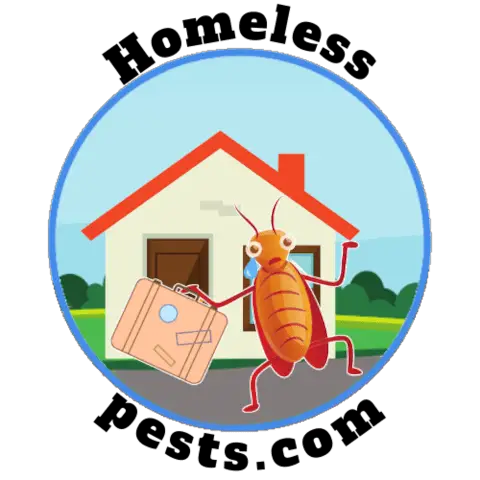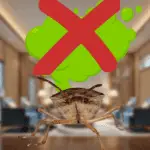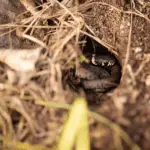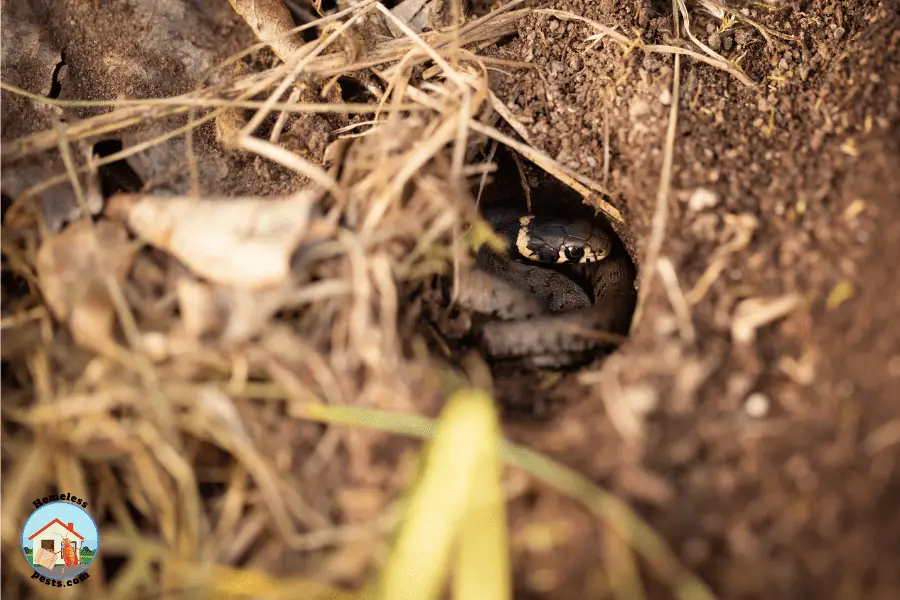If you are reading this article it is more than likely that you’ve just had an encounter with a snake.
While it is true some snake species are venomous, most native species in the United States are nonvenomous. Nevertheless, there will be instances when your life and the life of your family and pets are in danger.
In this article, I’m going to take you through the legal and moral implications of killing a snake as well as advising you on when you should and shouldn’t resort to this.
There are many options to choose from for a person who wants to know how to kill a snake. However, firstly we should discuss if the law is against you on this or if killing snakes is acceptable in the USA.
Disclaimer: This guide is intended to educate and entertain and not a substitute for professional advice or services. I highly recommend you seek out a professional to remove any snake on your property as a first resort.
Is The Killing Of Snakes Legal In The USA?
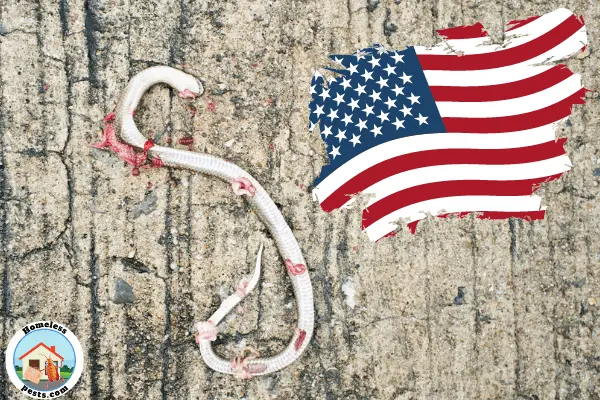
Some species of snakes in the USA are extremely common whereas others are in great danger of extinction. As a result, the US government has taken steps to protect certain species. This being said, the preservation of human life is paramount in US law.
When faced with an attack from venomous snakes, it is your right to defend yourself. In most cases, a snake attack can be avoided by being vigilant of your surroundings and never interacting with snakes unnecessarily.
Nevertheless, killing endangered snakes is illegal, and you stand a chance to be fined and imprisoned if found guilty.
The US law protects many species, including the following list of endangered and threaten snakes:
- Dusky sea snake (Aipysurus fuscus)
- Aruba Island rattlesnake (Crotalus unicolor)
- New Mexican ridge-nosed rattlesnake (Crotalus willardi obscurus)
- Eastern indigo snake (Drymarchon corais couperi)
- Maria Island snake (Liophus ornatus)
- Alameda whipsnake (Masticophis lateralis euryxanthus)
- Atlantic salt marsh snake (Nerodia clarkii taeniata)
- Copperbelly water snake (Nerodia erythrogaster neglecta)
- Lar Valley viper (Vipera latifii)
- San Francisco garter snake (Thamnophis sirtalis tetrataenia)
- Narrow-headed gartersnake (Thamnophis rufipunctatus)
- Giant garter snake (Thamnophis gigas)
- Northern Mexican gartersnake (Thamnophis eques megalops)
- Eastern Massasauga (Sistrurus catenatus)
- Indian python (Python molurus molurus)
- Black pinesnake (Pituophis melanoleucus lodingi)
- Jamaican boa (Epicrates subflavus)
- Mona boa (Epicrates monensis monensis)
- Puerto Rican boa (Epicrates inornatus)
- Virgin Islands tree boa (Chilabothrus granti)
- Round Island casarea boa (Casarea dussumieri)
- Round Island bolyeria boa (Bolyeria multocarinata)
As you can see, it’s a fairly long list, and it’s even possible I’ve accidentally omitted some species.
These and other species are likely to become extinct, and for that reason, they are protected by federal laws under the 1973 Endangered Species Act(ESA).
The laws protecting certain snake species can be state-specific, so this is why it’s always best to avoid killing a snake you can’t identify. For a larger list of common US snakes, both venomous and nonvenomous, check out my article: Identity 130+ Snake Species From The USA (With Images)
4 Effective Ways To Kill Snakes (If you have to)
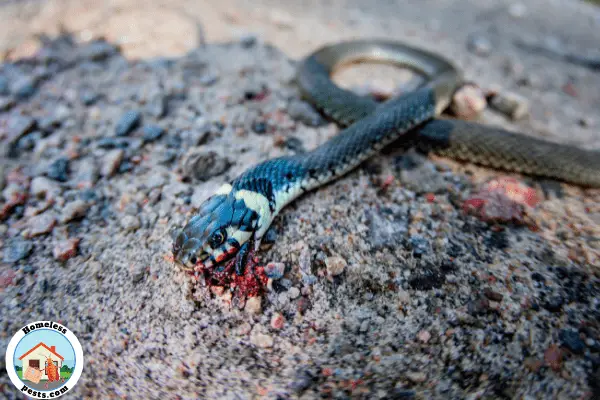
Despite the fact that you might run into an endangered or threatened snake, there are still plenty of snake species that are overpopulated, many of which are quite dangerous. If you have pets or small children running around your property, it may be necessary to dispatch a squatting snake.
Below, I’ll go through some methods you can try for yourself. Nevertheless, the safest way is to call in a professional and allow them to capture or kill the snake for you. You can find an affordable local pest control company by clicking here.
Use of Traps
This method of killing snakes is the most effective and safe. All you have to do is to purchase your trap, bait it and then wait for the snake to come slithering in. Once it has been caught, you then just have to dispose of the remains or release the live snake somewhere miles from your home.
There are two options I’d recommend, glue traps or humane live traps. You can find either option at a local hardware store, or purchase them from the Amazon links I’ll provide below.
Glue Trap

Purchase this trap from Amazon
Live Snake Traps

See the latest price for this trap on Amazon
Shooting snakes
Shooting a snake, though inhumane, is another way to kill this pest. However, you need to be very familiar with the firearm laws in your state as this may not be an option for all Americans.
You have to get a clear shot, and I recommend that the person involved in the act is an experienced shooter to avoid any accidents and for more accuracy. As might be expected, aiming for the snake’s head is the best way to quickly dispatch it.
It is also recommended that you have a disposal method in mind that reduces the chance of polluting the local environment, especially water supplies. At all costs, don’t keep a snake carcass around as this may attract other pests such as rodents and coyotes.
Using of poison on snakes
While poison can be an excellent option for a snake’s prey, such as rats or mice, it’s not ideal for snakes themselves. This is because snakes eat live food prey, and most species will never eat a dead animal. There is a chance that you can kill a snake that ingests a poisoned rodent before it dies, this would certainly be effective. However, it’s not a sure thing and therefore not the best way to rid yourself of snakes.
Snake clubbing
If you hit a snake with a shovel or heavy branch, this will more than likely end its life. But this does mean you need to get up close and personal with your quarry.
Hitting the snake on the head is the best way to kill a snake by this method, but it also calls for a lot of care. Once the snake is attacked the first time, it will not hesitate to defend itself and you may not get a second chance.
Personally, I would only resort to this if I felt particularly threatened or I had a great deal of nerve.
How do you trap a snake?
If you don’t want to get your hands dirty by shooting or beating a snake to death, the best option has to be trapping it. This is a lot easier than it sounds.
Whereas your local pest control technician may get very hands-on when trapping a snake, you don’t have to.
I have found that the most effective trap for most homeowners is a glue trap. The concept is quite simple and very hands-free

Firstly, buy the trap (You can even get them on Amazon these days) and then you choose the perfect area to place it. If you are dealing with snakes in your yard, somewhere near their source of food is ideal or in a moist and dark location. Once you’ve chosen where to lay the trap you may need to bait it but often they come with bait already inside.
Snakes, attracted by the smell of the bait will enter the trap and get stuck on the glue. As they are stuck fast, they will eventually die of starvation, however, these can literally take weeks.
If you are able to, I would recommend checking your traps regularly and once a snake has been caught, releasing it away from your property.
To unstick a snake from a glue trap, as suggested by Rattlesnake solutions, is to use ordinary vegetable oil as it can break down the glue and release the snake.
Again, this can be dangerous if dealing with a venomous snake and you need to have the correct equipment to safely deal with this pest so that your kindness doesn’t result in a bite.

Catch a snake safely, purchase these snake tongs on Amazon
When in doubt, just call in a professional to dispose of your snake for you humanely.

In what situations should you kill a snake?
In 99% of all cases, the answer is that you never need to kill a snake in the USA.
Snakes do not attack humans unless they feel threatened and they usually only do this as a last resort. Even if you are bitten by a snake, they rarely use their precious venom on humans and these bites are rarely fatal.
Snakes are crucial members of your local ecosystem, and they aren’t destructive creatures in the same way as other pests such as termites or wasps. In fact, snakes help in eradicating rodents such as mice which destroy crops and may harbor diseases.
The only time that we should resort to killing a snake is when we are defending ourselves. If after calling a professional pest control team to catch the snake and laying traps to stop the snakes, none of the methods works, it is time to consider killing it yourself.
Remember that the vast majority of snakes found in the USA are not aggressive and not even venomous. If you live in a place where snakes exist (which is every American not living in Alaska or Hawaii) you should familiarize yourself with common species. This will help you gauge the threat that you really face, and then you can decide the best course of action.
How Easy Is It To Spot A Venomous Snake?
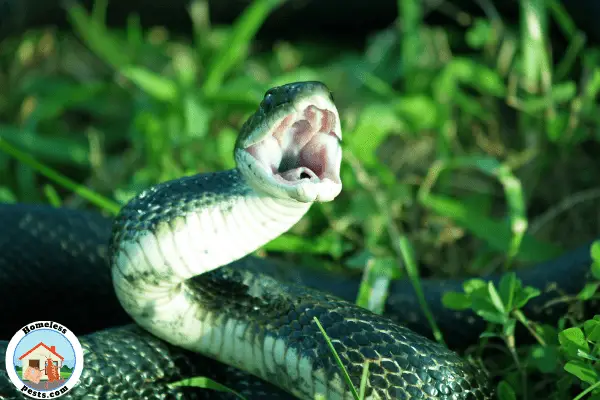
Most of the snakes found in the USA fall into the group known as colubrid snakes which are largely nonvenomous and harmless. Unfortunately, some of these snakes resemble highly dangerous and venomous species.
Some venomous snake species found in the United States include copperheads, water moccasins, coral snakes, and rattlesnakes to name just a few. If you want a list of venomous snakes by the state they are found in, then please read my article on identifying snake holes.
After doing a lot of research into this, honestly, my best advice is just to learn the particular species of snakes in your area. There are so many “rules” about snake recognition that have just proved to be too basic or downright false. While some of these traditional sayings and teaching have a grain of truth, they may lead to overconfidence or misplaced fear when encountering a snake.
Let me go through a few of the common rules for identifying snakes and explain why they are a little off.
How a snake behaves
Behavior is often thought to be critical in determining the type of snake you encounter We all know that rattlesnakes shake their rattles to produce sound as a warning to predators. Logically, you would only give a warning if you were a threat, and we find that most venomous snakes will hiss or warn predators in some way.
However, it’s not unusual for nonvenomous snakes (often harmless to humans) to exhibit similar behavior when corned or surprised. Just because it rattles or hisses, doesn’t mean it’s going to hurt you.
How it swims
Another rule I found being taught was that the manner in which a serpent swims will give its lethal intent away. With water snakes, it’s been observed that venomous species such as the Cottonmouths which live near water, will swim with their bodies on top of the water. Other nonvenomous species seem to swim with their bodies below the surface.
While again this is largely true, it’s also true that a cottonmouth can choose to submerge itself and a nonvenomous snake can make itself more buoyant. So, this isn’t a character trait you should kill over.
Color of the snake
Many venomous and nonvenomous snakes can be confused, and this is often due to their color. There is an old saying which is supposed to guide a weary traveler, especially when they come across a venomous coral snake.
Red touch black, safe for Jack. Red touches yellow, kills a fellow
However, this saying to distinguish between a deadly coral snake and a harmless Scarlet Kingsnake will not always steer you correctly. The saying was only ever intended for use in North America and even then doesn’t account for oddly colored members of either species.
The same can be said for identifying the difference between deadly Copperheads and nonvenomous milk snakes or Northern water snakes (as described by the New Jersey Government.). They can be so similar in appearance, you can easily make a mistake.
When in doubt, assume the snake is dangerous and just leave it be or get a professional to remove it.
Head shape
Another method being taught is to look at the snake’s head. It is said that venomous snakes have a more triangular-shaped head, unlike the rounded head in the nonvenomous species. Again, this isn’t a strict rule for all types of snakes, as any snake can inflate itself to appear bigger and display the classic triangular or diamond head shape. It’s just a rule that needs to die out as it leads to the culling of many harmless species.
Eye shape
In addition to the shape of the head, another rule wrongly taught is to look at the shape of a snake’s eyes. Many believe that the pupils in venomous snakes are always like a cat’s eyes. By that, I mean that their pupil is thin, black, and surrounded by a yellow-green eyeball.
On the other hand, many people claim that all nonvenomous species tend to have round eyes with rounder pupils. Again, this just isn’t true and many harmful and harmless snakes can have either eye configuration.
Don’t rely on the eye shape to help save you.
Again, the only safe way to identify a snake is to leave the exact species present in your state and know the risk when you encounter them. When in doubt, call in your friendly neighborhood pest control service.

Disposing of snake carcasses
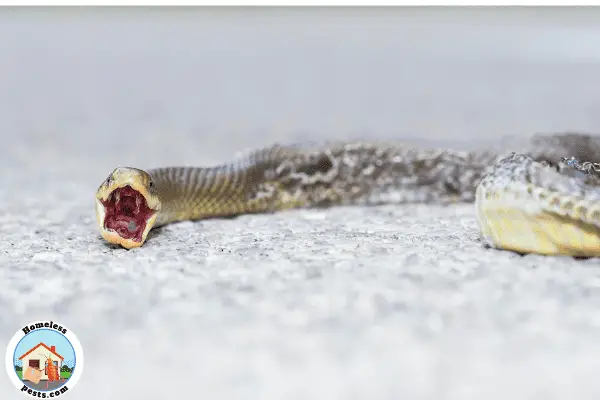
Disposing of snake carcasses correctly is important, and doing it incorrectly may cause harm to your local environment. Let’s not forget that a venomous snake can retain its venom even after death, so you don’t want some unsuspecting scavenging pet from dying.
Dead snakes can be disposed of by burying them, ensuring that you don’t do so near any water sources and deep enough to avoid scavengers.
An alternative way to dispose of the dead snakes would be cremating them because, in this way, other animals would not dig them up and feed on them. It is possible to dispose of them would by putting them in the trash, but I would advise contacting your local disposal company to seek advice. Often local governments offer a roadkill service that will pick up and dispose of dead pests too.
Remember to always handle live and dead snakes with protective equipment and be particularly careful of their fangs (if they have them) as post-mortem bites are still possible, though usually self-inflicted.
